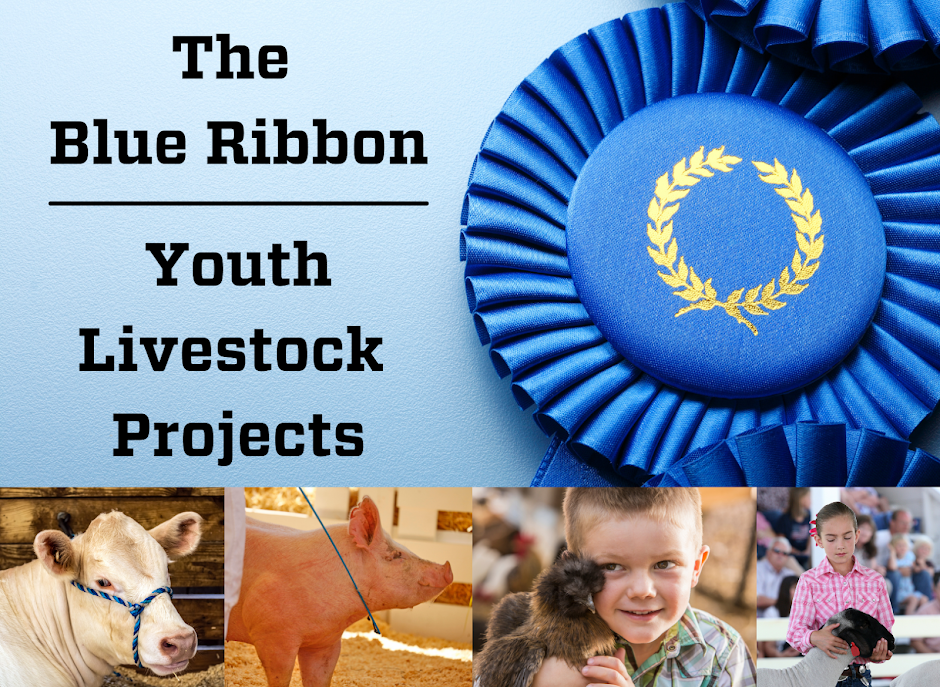All livestock projects need proper nutrition, but proper timing of feeding is also important. Typically, we advise youth to feed project animals twice per day, once in the morning and again in the evening. This is because it follows the normal feeding rhythms of livestock, especially ruminants like cattle, sheep and goats.
Normally ruminants on pasture appear to feed all day long, but if you watch them closely, there are times they are actively eating and other times when they are not. This down time is due to their need to ruminate and digest the forage they have eaten.
Remember a ruminant fills their rumen with forage, then it is the rumen microbes turn to digest and breakdown the food into smaller, more useful forms. This is when we see cattle, sheep or goats, laying down and "chewing their cud". The scientific term for their cud is a bolus. A bolus is partially digested food that needs to be broken down again by chewing and returns back into the rumen for a final microbial digest.
In the afternoon is when we generally observe this behavior of laying down and cud chewing. Animals spend most of the morning grazing and so an afternoon of resting and ruminating is normal. After this afternoon down time, ruminants tend to get up and graze again in the evening and then lay down, ruminate and sleep during the night.
For project animals, we control the times of day when feed and forage is available. It makes sense to feed ruminants when they are used to eating. It is advisable to feed ruminants in the early morning (by 8 AM) and then later in the evening (after 5 PM). Since most show animals are on a grain based diet, they tend to devour their feed rather quickly. I also advise feeding a little hay along with the grain to make the rumen full and give the microbes more to work on.
Although your project animal will grow more efficiently on grain, an empty rumen is not a good thing. When the rumen is missing feed, the microbes loose their food source and can die out quickly. No microbes, no microbial digestion and no breaking down of feed into useful forms. Keeping some hay available for animals to eat helps keep food in the rumen for the microbes to keep working.
A common mistake I have seen are sudden changes in feeding. Sometimes your schedule changes and you may not be able to feed as normal. It is okay to feed a little earlier or later in the morning and at night, but do not feed everything at once. A sudden increase in feed can cause problems from bloat to acidosis. Skipping a feeding is not a good practice either. No matter how late or tired you are, take time to feed. Skipping a feeding leaves and empty stomach and is also not an ethical practice. How would you like to go without a meal just because someone says they do not have time to cook?
As you move into summer and begin planning how you are going to stay up late and then sleep in, remember, your ruminants need the consistency. So go feed in your PJs or take a break from your evening fun, and keep those feedings consistent.
